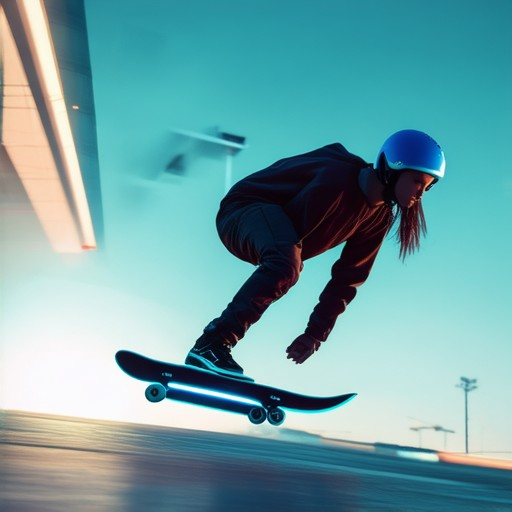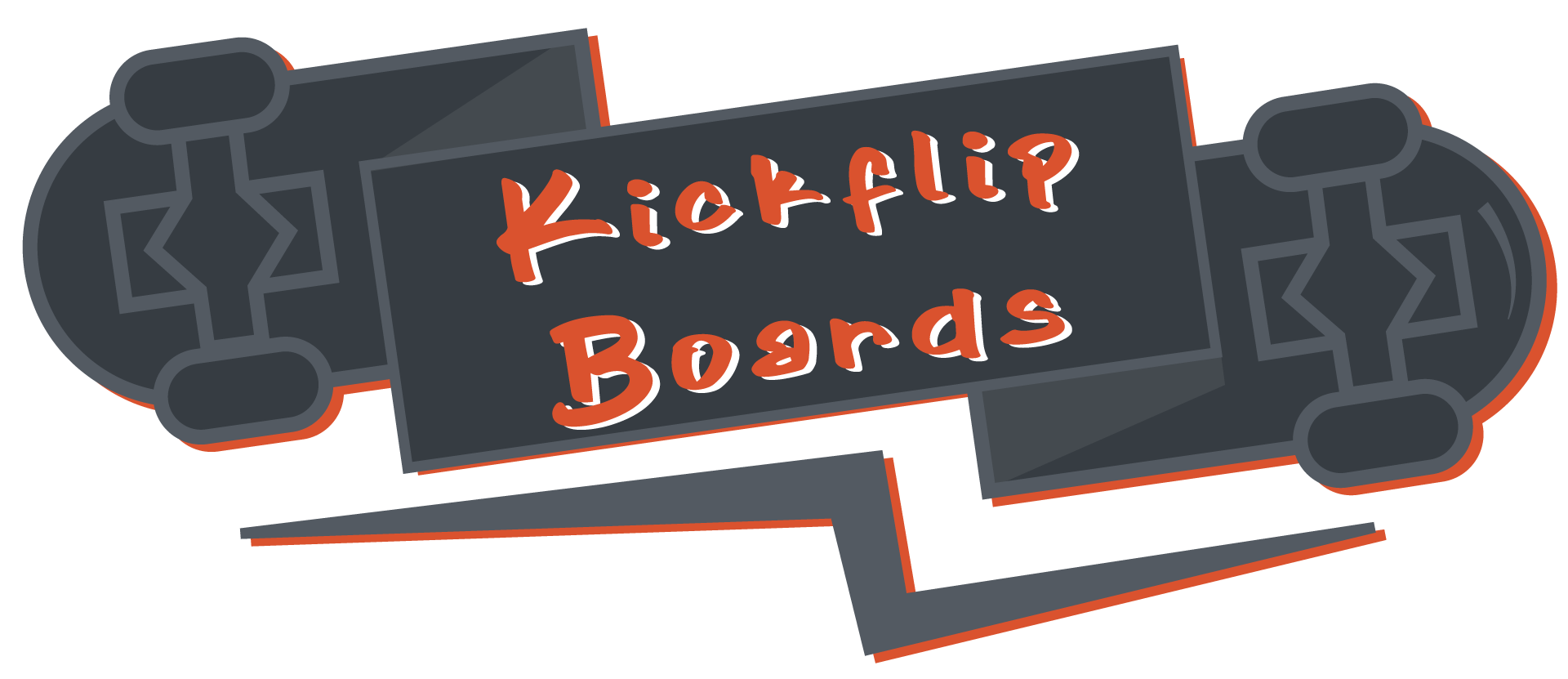Skateboarding is all about finding the perfect balance between style, speed, and control, but did you ever stop to think about how your weight plays a crucial role in achieving that harmony? Whether you’re a seasoned pro or just starting out, mastering the art of skateboard weight distribution can significantly impact your performance and overall enjoyment of the sport. From determining the optimal stance to understanding how your bodyweight affects maneuverability, there’s a lot to consider. In this comprehensive guide, we’ll delve into the ins and outs of skateboard weight distribution, exploring everything from the ideal weight range for different skill levels to how to maintain balance while gaining muscle mass. Whether you’re curious about adjusting your stance for better control or wondering if a heavier rider can keep up with the pack, this article has the answers you need to optimize your skateboarding experience. Let’s dive in and uncover the secrets to perfecting your weight distribution for maximum fun on the board!
Key Takeaways
– Proper Foot Placement: Standing with feet shoulder-width apart ensures even weight distribution, enhancing skateboarding balance.
– Core Engagement: Engaging core muscles aligns hips with feet, promoting stability and reducing the risk of falls.
– Posture Adjustment: Maintaining a straight spine and slight heel-to-toe alignment prevents slips and improves balance.
– Weight Shifting: Gradual weight transfer from one foot to another during movement boosts agility and control.

Where Should Your Weight Be When Skateboarding?
When skateboarding, your weight distribution plays a critical role in maintaining balance and control. Here’s a breakdown of how to position yourself effectively:
- Primary Foot Support :
- The majority of your weight should be placed on your primary foot (the front foot). This foot typically bears between 60-70% of your weight, providing the foundation for stability and maneuverability.
- Back Foot Role :
- Your back foot supports approximately 30-40% of your weight. While it carries less weight, it remains essential for balance and counteracting forces as you move.
- Body Positioning :
- Keep your upper body slightly leaned forward over your hands to shift your weight distribution naturally. This positioning helps maintain equilibrium and allows for better control over the board.
- Knee and Hip Alignment :
- Maintain a light bend in your knees and shift your hips slightly toward your front foot. This subtle adjustment helps transfer weight efficiently and enhances stability.
- Foot Placement :
- Your feet should be positioned slightly away from the board’s edges to ensure stability. Experiment with minor adjustments to find the optimal balance point.
- Mental Focus :
- Stay alert and focused on your surroundings. Anticipate movements and make micro-adjustments to your stance as needed. Tension in your body can hinder balance, so aim to stay relaxed yet attentive.
By mastering these techniques, you’ll improve your balance and control while skateboarding. Practice consistently, and soon it will feel more natural.
What is the Ideal Weight for Skateboarding?
The ideal weight for skateboarding varies depending on factors like body type, board size, and riding style. However, generally, a medium to average weight is often considered optimal for most skateboarders. Here’s a breakdown:
- Body Type: Lighter individuals may find lightweight boards more manageable, while heavier riders might prefer slightly heavier sets for better stability.
- Board Size: Larger boards typically require more weight to maintain stability, while smaller boards can be ridden by lighter individuals with ease.
- Riding Style: Aggressive downhill runs may benefit from a bit more weight for better control, while casual cruising can be enjoyed with a lighter setup.
For most skateboarders, weights between 120 and 150 pounds tend to offer a balanced ride. However, this can vary depending on the board’s size and personal preference. It’s important to find a weight that feels comfortable and allows for proper control while skating.
Kickflip Boards offers a variety of options for skateboarders of all sizes and weights, ensuring you can find the perfect setup for your needs. Explore their collection today!

Can a 300-pound Person Ride a Skateboard?
Yes, a 300-pound person can ride a skateboard, though the choice of board and skill level may vary depending on weight. Most modern longboards and electric skateboards are designed to accommodate weights up to 250-300 pounds, making them suitable for individuals within this weight range.
Weight Limits on Skateboards
Skateboards come in various types, each with different weight capacities:- Longboards : Often weigh between 8-14 pounds and can typically support riders up to 250-300 lbs.- Electric Skateboards : Many e-boards are built to handle heavier weights, often supporting riders up to 300 lbs or more.- Cruiser Boards : Designed for comfort and stability, these boards can sometimes support weights up to 350 lbs.- Downhill Skateboards : Built for speed and durability, many models can accommodate riders up to 275 lbs or more.
Safety Considerations
While a skateboard can technically support a 300-pound rider, safety and balance become more challenging due to increased weight. Proper technique, a wider stance, and a lower center of gravity are essential to maintain control. Additionally, heavier riders may benefit from longer decks and softer wheels for better shock absorption.
Recommended Boards for Heavier Riders
For optimal performance and comfort, consider boards designed with heavier riders in mind:- Kickflip Boards : Known for their durability and versatility, Kickflip Boards offer a range of options suitable for various weight ranges, including heavy riders. Their electric skateboards and longboards are particularly popular among heavier individuals due to their robust construction and smooth operation. Visit Kickflip Boards to explore their selection.
Final Thoughts
A 300-pound person can indeed ride a skateboard, but the choice of board and riding style will play a significant role in comfort and performance. Prioritize boards designed for heavier weights and focus on developing solid balancing skills to ensure a safe and enjoyable experience.

How to Distribute Your Body Weight
Distributing your body weight properly is essential for maintaining balance, preventing injuries, and optimizing performance. Here’s a step-by-step guide to achieving optimal weight distribution:
- Foot Placement : Stand with your feet shoulder-width apart. This ensures your weight is evenly distributed across your feet, which act as your primary points of contact with the ground.
- Heel-to-Toe Alignment : Shift your weight slightly toward your toes while keeping your heels firmly planted. This helps in maintaining stability and preventing your feet from slipping.
- Hip Positioning : Engage your core muscles to keep your hips aligned with your feet. This ensures that your body weight is balanced between your legs and torso.
- Knees Bent Slightly : Keep your knees bent at a slight angle to absorb impact and maintain flexibility. This helps in redistributing your weight more efficiently.
- Posture Adjustment : Maintain a straight spine and avoid leaning too far forward or backward. A neutral posture distributes your weight evenly across your upper body.
- Weight Shift During Movement : When moving, shift your weight gradually from one foot to the other to maintain balance. This is particularly important when changing direction or avoiding obstacles.
By following these steps, you can effectively distribute your body weight to enhance stability, reduce the risk of injury, and improve overall performance. Remember to practice these techniques during physical activities to maximize their benefits.
Where Do Men Gain Fat First?
Men typically gain fat first in the abdominal region, particularly around the visceral organs. This type of fat accumulation is influenced by hormonal factors, diet, and lifestyle.
Key Factors Influencing Fat Gain in Men:
- Hormonal Differences: Men have higher levels of testosterone and cortisol, which can contribute to fat storage, especially in the abdominal area.
- Diet: A diet high in refined sugars and processed foods can lead to increased visceral fat storage in men.
- Lack of Physical Activity: Inadequate exercise contributes to fat retention, particularly in the abdominal region.
- Genetics: Genetic predispositions can influence where and how much fat is stored in the body.
Managing Fat Gain:
To help manage fat gain and promote a healthier body composition, consider adopting a balanced diet rich in whole foods, fruits, vegetables, and lean proteins, along with regular physical activity including cardio and strength training exercises.
Kickflip Boards encourages a healthy lifestyle and provides resources for skateboard enthusiasts to stay active and informed about skateboarding techniques and equipment.

How to Gain 10 Pounds in a Month
To safely gain 10 pounds in a month, focus on consistently consuming more calories than your body expends while maintaining a balanced approach. Here’s a step-by-step guide:
- Create a Caloric Surplus : Aim to consume approximately 500-1000 calories more than your maintenance level each day. This surplus will lead to about 0.5-1 pound of weight gain per week, aligning with your goal of gaining 10 pounds in a month.
- Meal Planning :
- Breakfast : Include high-calorie foods like oatmeal, eggs, smoothies, or granola bars.
- Snacks : Opt for nuts, fruits, yogurt, or energy bars to keep metabolism active between meals.
- Lunch/Dinner : Increase portion sizes of rice, pasta, potatoes, and proteins like chicken, fish, or beans.
- Desserts : Add treats like ice cream, brownies, or cookies in moderation.
- Exercise Routine :
- Incorporate strength training exercises 4-5 times weekly to build muscle and burn fat.
- Focus on compound movements like squats, deadlifts, and bench presses to maximize efficiency.
- Engage in cardio sessions (e.g., jogging, cycling) 3-4 times per week to support calorie burning.
- Supplements :
- Consider whey protein or creatine to aid in muscle growth and recovery.
- Ensure adequate protein intake to support muscle synthesis and prevent fat storage.
- Hydration and Nutrition :
- Stay hydrated to prevent water retention and maintain digestion.
- Include healthy fats like avocados, nuts, and olive oil in your meals for sustained energy.
- Sleep and Recovery :
- Aim for 7-9 hours of quality sleep nightly to support muscle repair and metabolism regulation.
- Take regular breaks during the day to recharge and maintain productivity.
- Monitor Progress :
- Track your weight and measurements weekly to adjust your strategy as needed.
- Be patient and consistent, as gains may vary based on individual factors.
By following these guidelines, you can achieve your goal of gaining 10 pounds in a month while maintaining health and sustainability.




0 Comments